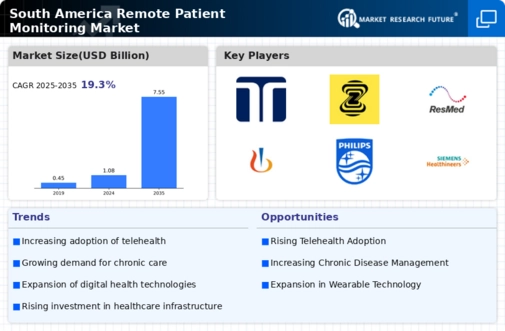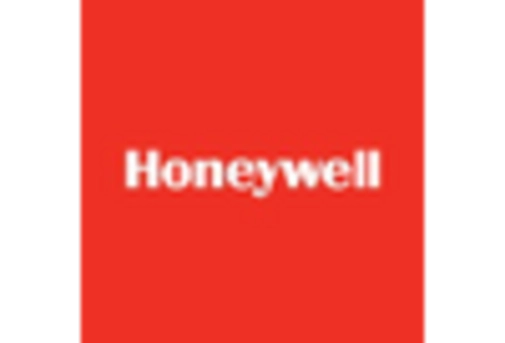The South America Remote Patient Monitoring Market is witnessing significant growth driven by the increasing demand for innovative healthcare solutions and rising investments in digital health technologies. The competitive landscape is characterized by a variety of players that range from established medical device manufacturers to new entrants focused on technological advancements in remote monitoring systems. Companies are leveraging their strengths, such as extensive research capabilities, robust distribution networks, and strategic collaborations with healthcare providers and insurers, to enhance their market positions.
The market dynamics are influenced by various factors, including regulatory support from governments aiming to improve healthcare access, the rising prevalence of chronic diseases, and the need for cost-effective healthcare solutions that can alleviate the burden on traditional healthcare systems.In this competitive arena, Medtronic stands out due to its comprehensive product portfolio and innovative technology solutions tailored for remote patient monitoring. The company has a strong presence in the South American market, leveraging its advanced monitoring devices and integrated care solutions that help in managing chronic conditions, thereby improving patient outcomes.
Medtronic's strengths stem from its significant investment in research and development, which has led to the creation of cutting-edge products designed to meet the specific needs of the South American population. Furthermore, Medtronic’s collaboration with local healthcare authorities and partnerships with medical professionals enhance its reach and efficacy in providing remote monitoring solutions tailored to regional healthcare challenges.Abbott is another key player in the South America Remote Patient Monitoring Market, known for its range of advanced diagnostic solutions and continuous glucose monitoring systems that empower patients with chronic diseases to manage their health more effectively.
The company benefits from a strong presence in the region, contributing to its ability to offer reliable and efficient monitoring solutions. Abbott's strengths lie in its innovative product offerings, strategic mergers and acquisitions that bolster its market position, and their ongoing commitment to improving patient care through digital health advancements. The company's portfolio includes devices that not only track vital signs but also interface with healthcare providers, facilitating timely interventions and personalized care strategies. Abbott's approach to integrating remote monitoring with broader healthcare initiatives reinforces its competitive edge in the dynamic South American healthcare landscape.






















Leave a Comment